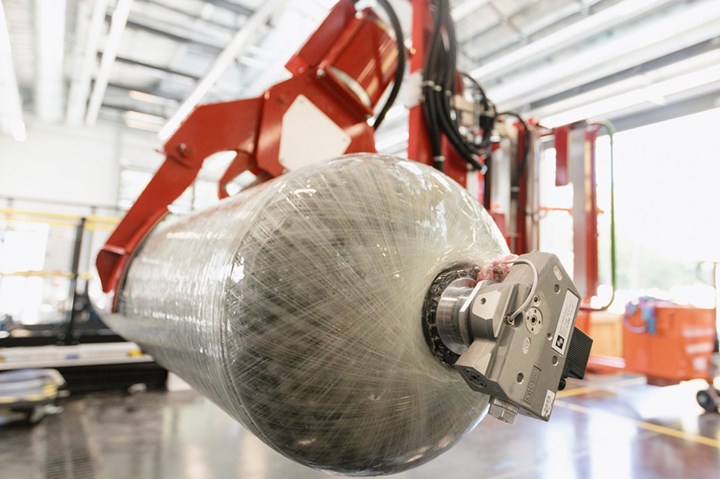Groupe Renault and Faurecia to collaborate on hydrogen storage systems
Hydrogen storage systems to be supplied by Faurecia for a fleet of Renault’s light commercial vehicles range. Production begins end of 2021.

Photo Credit: Faurecia
It was announced on Feb. 19 that Faurecia (Nanterre, France) and Groupe Renault (Boulogne-Billancourt, France) have decided to collaborate on hydrogen storage systems for Renault’s light commercial vehicles range.
Starting at the end of 2021, Faurecia will supply hydrogen storage systems for a first fleet of light commercial vehicles. These systems will be developed and produced at its global center in Bavans, France. Increased production will be extended to a new plant dedicated to hydrogen storage systems that Faurecia is building in Allenjoie, France.
“This partnership is an important illustration of our common vision for expanding the use of hydrogen as a cornerstone of the energy transition and as a perfect solution for zero-emissions mobility,” says Mathias Miedreich, executive vice president of Faurecia Clean Mobility. “Fuel cell electric vehicle technology is set to become significant in the powertrain mix by 2030, and as such Faurecia is dedicating important resources to accelerate its deployment.”
According to Gilles le Borgne, executive vice president, Engineering, Groupe Renault, “this collaboration on hydrogen storage systems is embedded in our strategy to offer market-ready H2 solutions for light commercial vehicles and target over 30% share of this fast-growing market in Europe. It supports the ambition shared with our partner, Plug Power, to build a unique end-to-end green hydrogen and fuel cell value chain and new value-generating activities in France.”
Related Content
-
Cryo-compressed hydrogen, the best solution for storage and refueling stations?
Cryomotive’s CRYOGAS solution claims the highest storage density, lowest refueling cost and widest operating range without H2 losses while using one-fifth the carbon fiber required in compressed gas tanks.
-
Hexagon Purus opens new U.S. facility to manufacture composite hydrogen tanks
CW attends the opening of Westminster, Maryland, site and shares the company’s history, vision and leading role in H2 storage systems.
-
Honda begins production of 2025 CR-V e:FCEV with Type 4 hydrogen tanks in U.S.
Model includes new technologies produced at Performance Manufacturing Center (PMC) in Marysville, Ohio, which is part of Honda hydrogen business strategy that includes Class 8 trucks.








.jpg;maxWidth=300;quality=90)



